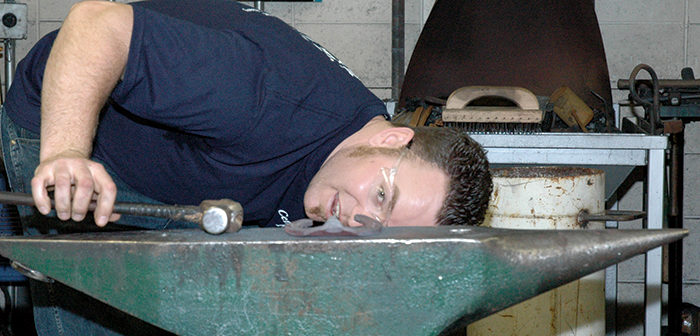American Farriers Journal
American Farriers Journal is the “hands-on” magazine for professional farriers, equine veterinarians and horse care product and service buyers.

WANT A FLAT ANVIL SURFACE WITH ROUNDED EDGES. Travis Koons normally softens all anvil edges and end up with a perfectly flat surface for easier shoe shaping.
Four or five times in their careers, many shoers will purchase a new anvil at the local farrier shop and load it into their truck.
Some farriers will start banging on it at the very next shoeing stop, while other farriers will take the new purchase back to the shop and spend some time refining the anvil for their particular type of shoeing work.
Tom Riddle says most anvils come properly finished from the factory. While a few may need some clean up, the general manager at Centaur Forge in Burlington, Wis., says most new anvils arrive ready to use.
He maintains few modifications are necessary if you purchase an anvil that fits your particular shoeing style. “Everything from the horn to the face width should be matched to the kind of work you do,” he says. “It doesn’t make a lot of sense to shoe draft horses with a 70-pound anvil or buy a 260-pound anvil if you shoe small horses or don’t handmake shoes. If you shape shoes hot, you’ll probably want a more traditional round horn, while cold shoers may find a broader, square-style horn suits their needs.”
Riddle says anvil modifications depend on user preference. Some farriers find it helpful to have options, possibly saving them another trip to the truck to get another tool while making their day…